Occupational environment monitoring at an incense manufacturing factory
99,000 ₫
Note: The above price is calculated for one sample. Prices may vary depending on the area of the environment to be monitored and market fluctuations. For more accurate pricing, please refer to the price list or contact our consulting staff directly.
Monitoring the environment of incense production factories involves collecting, analyzing, and evaluating workplace factors that may be harmful to workers’ health.
Table of Contents
Toggle1. Overview of Incense Manufacturing Factories
a. What is an incense manufacturing factory?
A factory producing incense (incense sticks) is a facility specialized in manufacturing incense products, also called scented candles. These incense sticks are typically used to create pleasant fragrances, decorate spaces, and perform religious or spiritual rituals. In an incense manufacturing factory, the production and packaging of incense are carried out with appropriate stages and equipment to ensure quality and production efficiency.

b. Production stages in an incense manufacturing factory
The production stages in an incense manufacturing factory may include the following steps:
- Material preparation: The main materials for incense production include wood powder, herbal powder, various fragrances, binders, and water. These materials are prepared and measured precisely to create the fragrance formula for each type of incense.
- Mixing the ingredients: The materials are mixed together to form a homogeneous mixture. The mixing process can use equipment such as mixers or automated mixing systems to ensure even combination and achieve the desired quality.
- Shaping: The mixture is pressed into different incense shapes using molds or pressing machines. This ensures the incense sticks have uniform shapes and are easy to burn.
- Drying: The shaped incense sticks are placed in a drying system to remove moisture and dry completely. Drying can be done in ovens or through natural drying processes.
- Painting and decoration: After drying, the incense sticks can be painted or further decorated to create unique designs and styles. Painting can be done manually or using machines.
- Packing: The finished incense sticks are packed into suitable packaging. Packaging can be cardboard boxes, plastic bags, or other types depending on customer requirements.
- Quality control: Before shipment, the incense sticks undergo quality control to ensure they meet the required quality and safety standards.

c. Types of machinery used in incense manufacturing factories
In an incense manufacturing factory, the following types of machinery and equipment may be used:
- Mixers: Used to mix materials such as wood powder, herbal powder, fragrances, binders, and water to form the incense mixture.
- Press machines: Used to press the incense mixture into specific shapes. Press machines can be manual or automated, depending on production scale.
- Drying ovens: Used to dry incense after shaping. Ovens may use high temperatures for fast drying or natural drying processes.
- Painting machines: Used to apply a surface coating on the incense sticks after drying. Painting machines can be automatic or manually operated.
- Packing machines: Used to pack incense sticks into suitable packaging such as cardboard boxes, plastic bags, or other types.
- Quality control machines: Used to inspect the quality of incense before shipment. These machines can check shape, weight, fragrance, and other quality standards.

d. Occupational diseases for workers in incense manufacturing factories
Workers in incense manufacturing factories may be exposed to the following occupational diseases:
- Respiratory diseases: Working in an incense production environment may cause respiratory issues such as pneumonia, rhinitis, sinusitis, and colds due to exposure to chemical compounds, dust, and fumes.
- Skin diseases: Continuous contact with chemicals during incense production can lead to skin irritation, dermatitis, eczema, infections, and other skin-related issues.
- Eye problems: Exposure to chemicals and dust in incense factories may cause eye irritation, infections, and damage, resulting in conjunctivitis, redness, dryness, and discomfort.
- Noise-related issues: Machinery and equipment in incense factories can produce high noise levels, affecting hearing and causing problems such as hearing loss, tinnitus, and sleep disturbances.
- Posture-related problems: Prolonged work in uncomfortable or incorrect postures can cause spine, muscle, and joint issues, including back, neck, and shoulder pain, and other posture-related disorders.

e. Common types of incense on the market
There are many common types of incense on the market, including:
- Traditional incense: The most common type, used in religious rituals, prayer ceremonies, and to create a mystical atmosphere. Traditional incense is often made from natural ingredients such as wood, resin, and natural fragrances.
- Incense cones: Small, compact incense sticks shaped like flower buds, fruits, or other attractive shapes. Cone incense usually has a pleasant aroma and is used to create a relaxing environment.
- Compressed incense: Made by pressing incense ingredients into tightly packed forms. This type is commonly used in rituals, prayers, and spiritual activities.
- Natural incense: Made from natural ingredients such as herbs, leaves, wood, and other natural fragrances. Natural incense typically has a fresh and clean scent.
- Lamp incense: Designed to be used as a light source and also emits herbal fragrance. Lamp incense often has unique designs and is used to create a cozy and romantic atmosphere.
2. Overview of occupational environment monitoring services
a. What is occupational environment monitoring in incense manufacturing factories?
Occupational environment monitoring (or workplace environment measurement) in incense manufacturing factories involves collecting, evaluating, and analyzing indicators of occupational environment factors at the factory. The goal is to implement timely measures to minimize environmental impacts on workers’ health and prevent occupational diseases. Occupational environment monitoring is a mandatory requirement for incense manufacturing factories.
Occupational environment monitoring plays a crucial role in caring for, protecting, and enhancing workers’ health because the primary resource of any business—and the source of direct profit—is its workforce. Workers who are frequently exposed to risk factors and occupational hazards beyond permissible limits may experience health issues and develop occupational diseases.
REGISTER FOR OCCUPATIONAL ENVIRONMENT MONITORING SERVICE
b. Nam Viet’s occupational environment monitoring program
Nam Viet’s occupational environment monitoring program is developed by monitoring engineers specializing in occupational safety and environmental protection. Aimed at ensuring workers’ health and safety, the program uses modern measurement methods to monitor air quality, water quality, and microclimate, physical factors, dust, and more in the workplace. This program is crucial in ensuring a safe working environment and protecting workers’ health.
Additionally, Nam Viet’s program plays an important role in researching and developing new solutions to improve workplace environmental quality. With the dedication and professionalism of its monitoring experts, Nam Viet’s proprietary monitoring program has become a breakthrough in occupational safety management and environmental protection in Vietnam.

c. Standardization in workplace measurement procedures
Standardization in Nam Viet’s workplace measurement procedures is crucial to ensuring the quality of results. To guarantee accuracy and reliability, the program follows standards and procedures recognized by the Ho Chi Minh City Department of Health. This ensures that the collected data can be highly trusted during workplace assessments and in making decisions to improve the working environment and protect workers’ health.
These standardized procedures also ensure that measurements are conducted by highly qualified monitoring specialists with years of experience, allowing managers and experts to rely on Nam Viet’s results and make accurate, valuable decisions in protecting worker health and the environment.
By applying standardization in workplace measurement procedures, Nam Viet demonstrates its commitment to ensuring a safe working environment and protecting workers’ health, while contributing to improving occupational safety management and environmental protection quality in Vietnam.
d. Reports on occupational environment monitoring results in incense manufacturing factories
Monitoring results are compiled according to Form No. 04, Appendix III issued with Decree 44/2016/ND-CP and prepared in two copies: one sent to the enterprise that contracted the monitoring service and one retained by the organization performing the monitoring.
The retention period for monitoring results, according to law, is indefinite.

e. Frequency of occupational environment monitoring according to law
According to Clause 2, Article 18 of the Law on Occupational Safety and Health 84/2015/QH13, employers must organize occupational environment monitoring to assess harmful factors at least once per year.
f. Deadline for submitting occupational environment monitoring reports according to law
The deadline for submission is before December 31 each year. Enterprises at production facilities must submit occupational environment monitoring reports to the Department of Health in the locality where the enterprise has its headquarters and where employees are working.
When there are changes in technology processes, production processes, or renovations/upgrades of facilities that may generate new hazardous factors affecting workers’ health, enterprises must update occupational hygiene records regarding harmful factors requiring environmental monitoring.
g. Penalties for violations of occupational environment monitoring by employers
According to Article 27 of Decree No. 12/2022/ND-CP dated January 17, 2022, on administrative penalties in labor, social insurance, and Vietnamese workers working abroad under contracts:
- Clause 2: Fines from 2,000,000 – 5,000,000 VND for employers who fail to publicly disclose monitoring results at the workplace immediately after receiving results of occupational environment monitoring and evaluation of hazardous factors.
- Clause 3: Fines from 20,000,000 – 40,000,000 VND for employers who do not conduct occupational environment monitoring to control health hazards for workers as required by law.
- Clause 4: Fines from 40,000,000 – 60,000,000 VND for employers who collude with monitoring organizations to commit fraud in occupational environment monitoring but without reaching the level of criminal liability.
3. Harmful Environmental Factors for Workers in Incense Manufacturing Factories
During work in incense manufacturing factories, workers may be exposed to several harmful environmental factors, including:
- Fragrances and additives: During incense production, fragrances and additives such as essential oils, artificial scents, and chemical compounds may be used. Long-term exposure to these substances can cause respiratory problems, allergies, and digestive system damage.
- Dust and chemical fumes: Incense making can generate dust and chemical fumes from processing and production. Incense dust may irritate the respiratory tract and cause health issues such as pneumonia or other lung diseases. Chemical fumes can be hazardous if inhaled or in direct contact with skin and eyes.
- Heat and hot lamps: Some incense production processes involve high temperatures and the use of hot lamps, creating a hot working environment. Exposure to high temperatures can disrupt body temperature regulation and negatively affect workers’ health.
- Noise: Certain incense production processes may generate loud noise from machinery and equipment. Continuous and high noise levels can cause stress, sleep disturbances, and negatively affect the nervous system and hearing.
- Flammable and explosive substances: In some cases, flammable or explosive substances such as gunpowder or other combustible chemicals may be used. Working with these substances carries a risk of fire or explosion, posing serious danger to workers.
REGISTER FOR OCCUPATIONAL ENVIRONMENT MONITORING SERVICE
4. Measures to Improve the Working Environment in Incense Manufacturing Factories
To improve the working environment in incense factories and protect workers’ health, the following measures can be applied:
- Ventilation and dust extraction systems: Install effective ventilation and dust extraction systems to remove dust and toxic gases during production. Ensure high-quality filters are used to prevent the spread of dust and harmful chemicals into the air.
- Use of personal protective equipment (PPE): Ensure workers are provided with PPE such as masks, safety goggles, gloves, and protective clothing to protect respiratory system, skin, and eyes from direct contact with chemicals and dust.
- Safety training and supervision: Train workers on safe working procedures, proper use of PPE, and fire and explosion prevention measures. Ensure periodic monitoring and evaluation to enforce compliance with safety protocols.
- Noise control: Implement soundproofing measures, use noise-reducing equipment, and apply noise control methods to reduce the impact of noise on workers.
- Management of flammable and explosive substances: Apply strict safety regulations and procedures for the use and storage of flammable and explosive substances. Ensure workers are trained on safety measures when handling these materials.
- Health assessment and monitoring: Conduct regular health assessments for workers and monitor indicators such as respiratory function, skin condition, hearing, and exposure to toxic substances.
- Regularly conduct occupational environment monitoring in factories, collect and analyze harmful factors, and adjust to reduce risks to prevent occupational diseases for workers.
5. Benefits of Periodic Incense Factory Environment Monitoring
An Toan Nam Viet provides businesses with excellent benefits when using occupational environment monitoring services according to Decree 44/2016/NĐ – CP on the management and control of harmful workplace factors affecting workers.
- Businesses can proactively control harmful factors in their workshops or factories.
- Receive advice and recommendations to reduce harmful factors and improve workplace environmental quality.
- Indirectly protect human resources, a key factor in business development.
- Reduce the impact of occupational diseases on health, minimizing future medical costs.
- Improved worker health leads to higher product quality and ensures consistent production output.
- Ensure compliance with labor safety regulations and avoid legal risks.
- Enhance credibility and professionalism, elevating the company’s brand.
An Toan Nam Viet’s environmental monitoring service is a solution to reduce occupational disease risks, contributing to a clean and high-quality working environment.

6. Nationwide Occupational Environment Monitoring Center
An Toan Nam Viet Occupational Environment Monitoring Center is a professional unit for supervising and measuring occupational environment quality across all provinces in Vietnam. With experienced monitoring specialists, the center uses modern measuring equipment to ensure accuracy and reliability.
In addition to monitoring services, the center assists clients in planning, managing, and tracking workplace environmental issues. With the motto “customer-centric,” the center prioritizes client satisfaction and provides optimal solutions for businesses.
REGISTER FOR OCCUPATIONAL ENVIRONMENT MONITORING SERVICE
With investments in technology, equipment, and workforce, An Toan Nam Viet’s monitoring center has become a reputable unit in occupational environment monitoring in Ho Chi Minh City with the following objectives:
- We value our brand reputation and the quality of our services.
- We provide clients with the best and most suitable solutions.
- Alongside experienced Masters and Engineers, aiming to protect the environment and benefit businesses.
- Clients using An Toan Nam Viet monitoring services receive professional support from experts and the best cost advantages.
The occupational environment monitoring process at An Toan Nam Viet includes the following steps:
- Before monitoring, ensure all equipment is calibrated according to legal regulations.
- Follow the committed occupational environment monitoring procedures with the Department of Health.
- Report monitoring results honestly to employers.
- If results indicate unsafe conditions, An Toan Nam Viet will support remediation measures, and the workplace will:
- Implement measures to improve working conditions, minimizing harmful factor exposure and preventing occupational diseases.
- Organize health check-ups to detect occupational diseases early for workers in unsafe positions.
- Provide material compensation to workers according to labor law regulations.

7. Occupational Environment Monitoring Pricing
To help businesses conduct professional and effective occupational environment monitoring, An Toan Nam Viet provides a detailed price list for monitoring services with quality and reasonable costs.
- Our price list provides detailed information on all monitoring services offered, including costs for travel, measurement, analysis, and reporting. Clients can trust the accuracy and reliability of our monitoring reports.
- We commit to offering competitive and reasonable prices, while providing fast and professional consultation for all monitoring service inquiries.
- With An Toan Nam Viet’s monitoring price list, clients can easily select service packages suitable for their needs, ensuring maximum satisfaction with professional service quality.
No comments yet

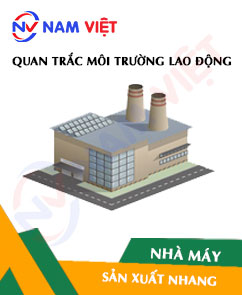
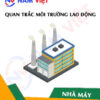
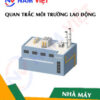
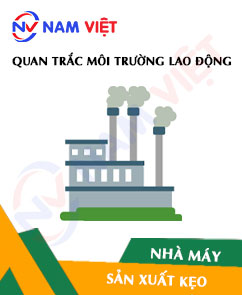

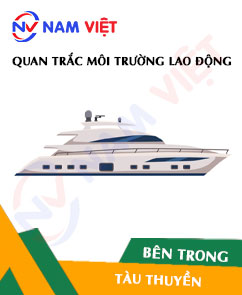


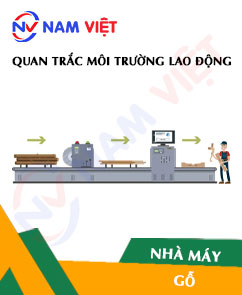

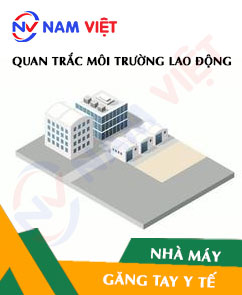
Review Occupational environment monitoring at an incense manufacturing factory
There are no reviews yet.